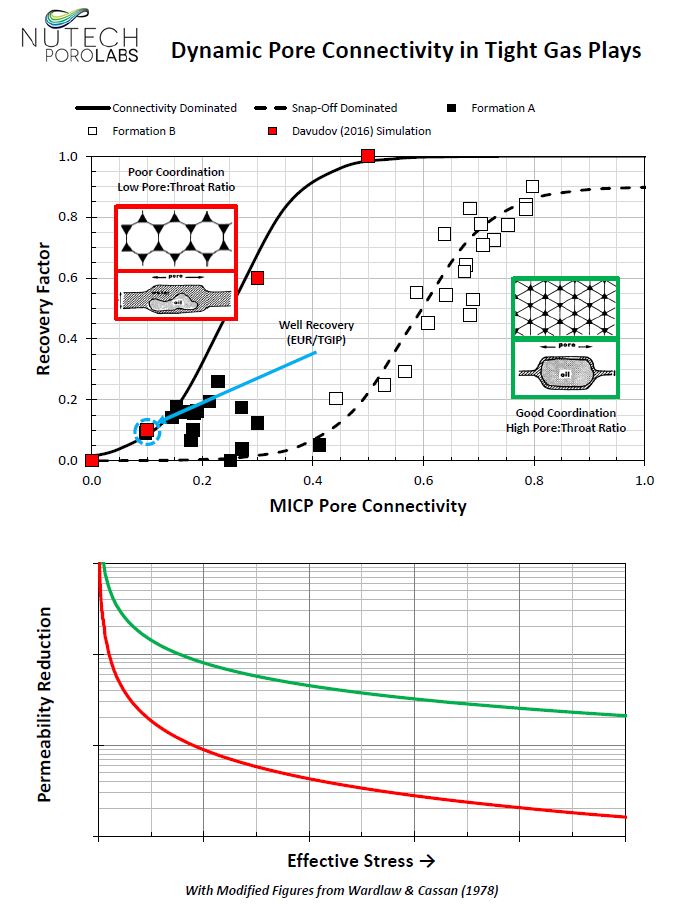James Greene, Lab Manager – PoroLabs
The connective behavior of pore throats can be a major influence on residual gas saturation in low permeability lithologies. The pore connectivity ratio can be described the proportion of accessible pore volume to total pore volume (Davudov et al., 2016). The inaccessible pore volumes can be reflective of both natural and induced isolated pores, in both organic and inorganic pore networks. Pore to throat aspect ratio and small corner trapping influences can also result in fluid phase snap-off despite higher pore connectivity (Wardlaw & Cassan, 1978).
Hydraulic interconnectivity is a dynamic process, where increasing effective stress through depletion can result in additional permeability loss beyond pore shrinkage. Lithologies with significant permeability loss can be characterized by lower Biot coefficients, as the external overburden load is preferentially carried by the matrix, leading to more connective loss. Hysteresis causes permanent permeability loss even if reservoir pressure is allowed to build-up (Rosen, 2014).
Mercury injection capillary pressure (MICP) experiments are unique in that both the pore connectivity ratio and stress sensitivity can be determined. The accessible pore volume is represented by the removal of pore and grain related compressive volumes from the total, closure-corrected pore volume. Both porosity and permeability stress sensitivity can be modeled by the reduction of pore volumes at various pore throat sizes as a function of increasing mercury (confining) pressure.

In the example above, two trapping behaviors are illustrated – pore connectivity loss and capillary snap-off. Formation B, despite higher pore connectivity, has lithologies that experience recovery as low as 20% as a result of capillary snap-off (pore:throat aspect ratio and small corner trapping). Formation A samples show less pore connectivity and experience trapping due to both connective loss and snap-off. Minor increases in connectivity significantly increases recovery in the connective dominated lithologies of Formation A due to more slot-like pore behavior (low pore:throat aspect ratio). The sigmoidal nature of pore connectivity vs. recovery for the connectivity dominated profile matches well to the simulated results presented in Davudov (2016) for pore connectivity in shales. The average pore connectivity and production recovery factor (EUR/TGIP) from a Formation A well is also plotted – indicating the residual gas for this particular well is trapped by connective loss over time with production.

